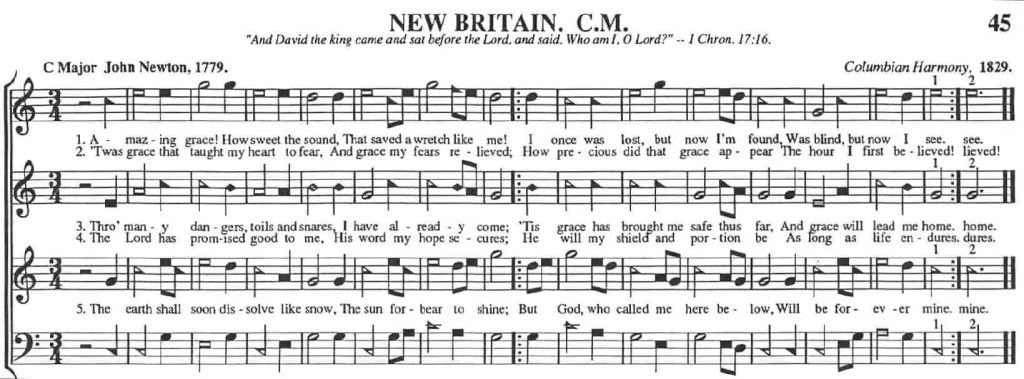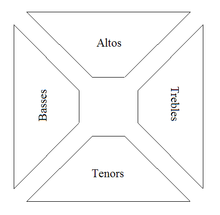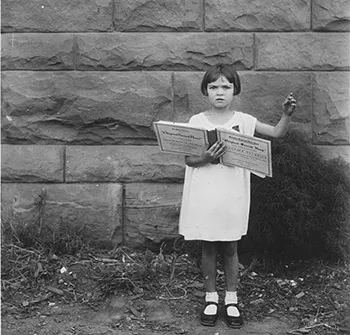Helpful Links About Shape Note Singing
- Learn more about this singing tradition via Sacred Harp Musical Heritage Association
- Find Sacred Harp Groups across the world
- Find links to all the music in The Sacred Harp on Sacred Harp Bremen’s site. They’ve even got midi files of all the parts, and links to good YouTube videos!
- Youtube Playlists of Favorite Shape Note Songs via CorkSacredHarp
- Spotify Playlist of Favorite Shape Note Songs
- Check out Lisa Grayson’s excellent beginner guide.
New to Shape Note Singing?
In Indy Sacred Harp we are happy to help new singers get oriented to shape note singing. Don’t hesitate to ask questions or request that we sing through your part if you are struggling. Below is some information to get you started.
The Music

The musical notation in The Sacred Harp is written in four shapes, shown above. The shapes are a visual aid for sight-reading the music. We always sing through the shapes before we sing the words, which provides an aural aid to recognizing the intervals between the notes.
There are four lines of music, one for each of the four parts. The top line is the high harmony, Treble. The second line is the Alto part. The third line is the tenor. They get to sing the tune. The bottom line is the Bass part. Otherwise the musical notation is the same as round-note music. See below for example:

You might recognize this song. If you look at the third line of musical notation you will find that it is the tune Amazing Grace is commonly sung to.
The Singers
Wondering where you should sit? If you are new to singing, give the tenor section a try. All genders sit in this section and they sing the tune. This is the easiest part to pick up and begin to learn. Shape-note singers arrange themselves into a hollow square and the tenor section is usually on the same side as the front door. We’re an exception in Indy though, the tenor section in the Friends’ Meeting House is across from the door. We will be arranged like this (imagine walking in behind the Altos):

If you like singing a harmony you are welcome to try the other sections of course! Typically the Altos are all female and the Basses are all male. The Trebles are mixed genders and octaves. We want you to sit where you are most comfortable singing though, so whatever your gender, sit in a vocal range that works well for you.
The Singing
Our monthly (1st Saturdays, 3rd Tuesday) Sacred Harp singings are informal and leadership is shared among singers. Each singer gets an opportunity to “call” (request) a song. The singer who calls the song has the right to set the pitch, the tempo, and decide which verses we sing. In otherwords, everyone gets the chance to lead. In larger singings, the leader will stand in the center of the square to lead the song, but singers in Indy often stay in their seats.
You don’t have to lead though. Most singers aren’t able to pitch well, so groups will identify singers who are the go-to for pitching songs. You can always ask someone to pitch the tune for you. The tempo is kept with arm motions, up and down (kind of like a conductor, but with less flourish). Most of the singers will join the leader in keeping time with their arm motions. Some singers don’t enjoy leading and will ask that someone else lead the songs they call. There are several newer singers in Indy, so the more experienced singers are always ready to get songs going.
